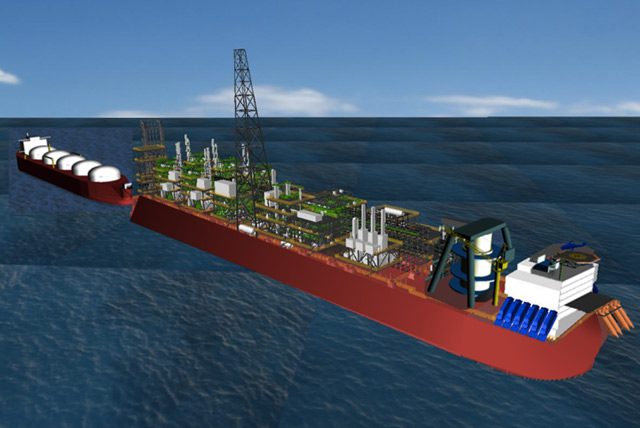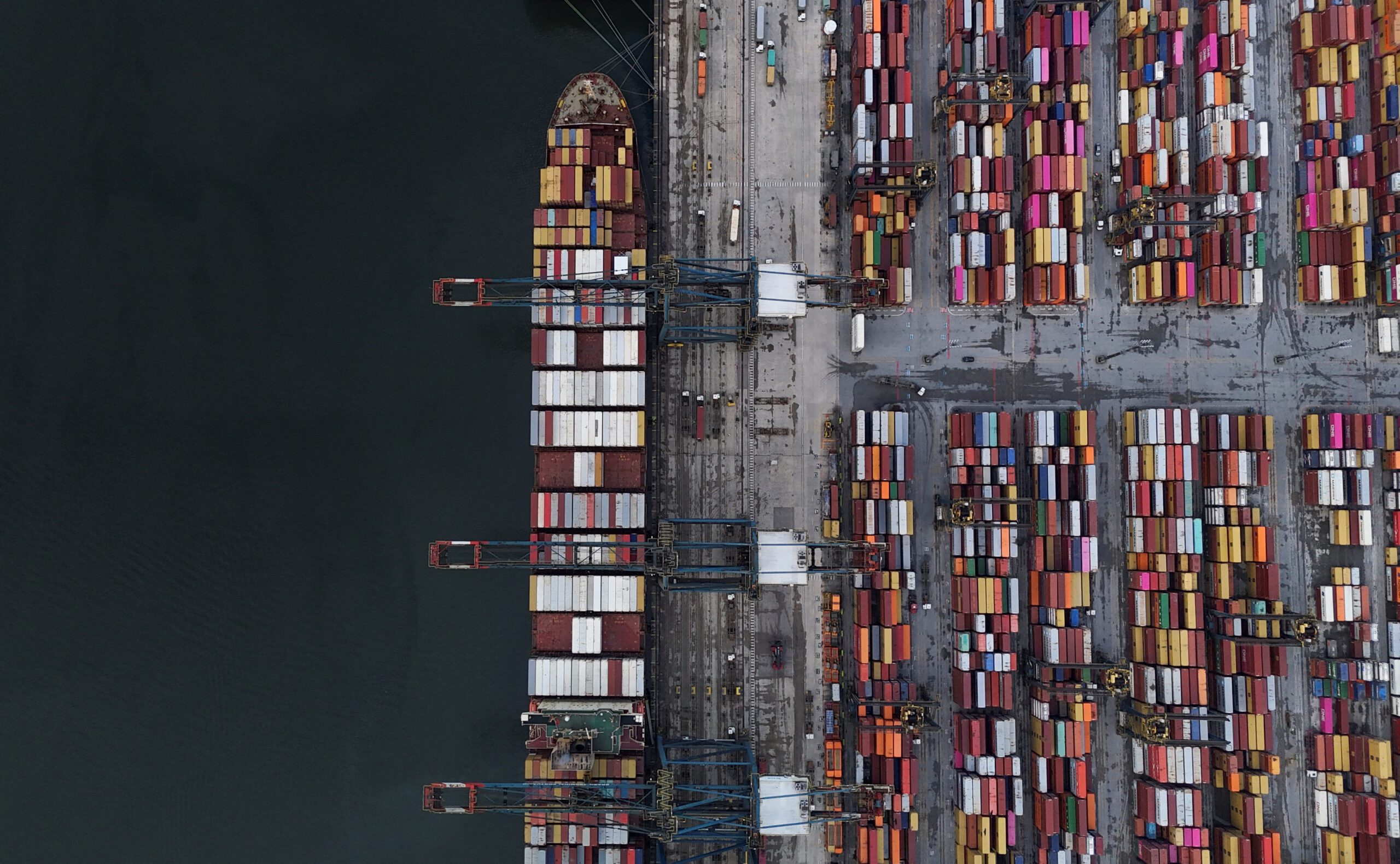The Scarborough FLNG facility will be 495 meters long, 75 meters wide and fitted with up to approximately 10 storage tanks inside the hull, with an onboard storage capacity of approximately 380,000 m3, rendering via ExxonMobil
By James Paton
Sept. 26 (Bloomberg) — BHP Billiton Ltd., Australia’s biggest oil and gas producer, backed plans to develop what may be the world’s largest floating liquefied natural gas project, saying it’s “fully aligned” with partner ExxonMobil Corp.
“We’ve progressed it far enough now that we’re confident in the technology and the commerciality, so we know it will go forward,” Tim Cutt, president of BHP’s petroleum and potash division, told reporters today on a conference call.
BHP, the world’s largest mining company, will weigh the proposed Scarborough floating LNG development off the west coast of Australia against other investments, Cutt said. While Exxon has made significant progress, it needs to find ways to make the venture more profitable and overcome challenges including the location and water depths, its Australian unit wrote today in an e-mail response to questions.
Turning natural gas into liquid at sea is potentially cheaper than processing it onshore as it eliminates the need for pipelines to the coast. Royal Dutch Shell Plc in Australia is developing the Prelude floating LNG vessel, expected to weigh six times as much as the biggest aircraft carrier.
BHP has studied floating LNG for years and spent a “huge amount of money” evaluating the technology, Cutt said.
The company is looking for large liquids-rich basins in Western Australia, and sees prospects in the Great Australian Bight off the south coast as less attractive than other regions with technical challenges and higher costs, he said.
Russian Potential
The company, which is based in Melbourne, has been expanding its oil and natural gas business in North America. Cutt last year succeeded J. Michael Yeager, who oversaw BHP’s $20 billion move into the U.S. shale oil and gas industry.
Outside North America, Russia may have the most potential in shale, Cutt said today. Russia has the world’s biggest recoverable shale oil resources and the ninth-largest in shale gas, according to a January report by the U.S. Energy Information Administration. BHP hasn’t made any decisions on whether to expand in shale globally, Cutt said.
“Most of the other basins around the world get a little more difficult,” he said. “They are more structurally complex, the hydrocarbon content may be lower, the size much smaller.”
BHP earlier today said it signed a preliminary agreement with Mexico’s Petroleos Mexicanos, known as Pemex, to exchange deepwater expertise and information in the country. BHP sees opportunity in Mexico following recent economic reforms, according to an e-mailed statement.
BHP has met with Mexican officials and the state-owned company to gather data for assessing the best prospects, Cutt said in a Bloomberg interview in New York earlier this month.
Copyright 2014 Bloomberg.

 Join The Club
Join The Club











